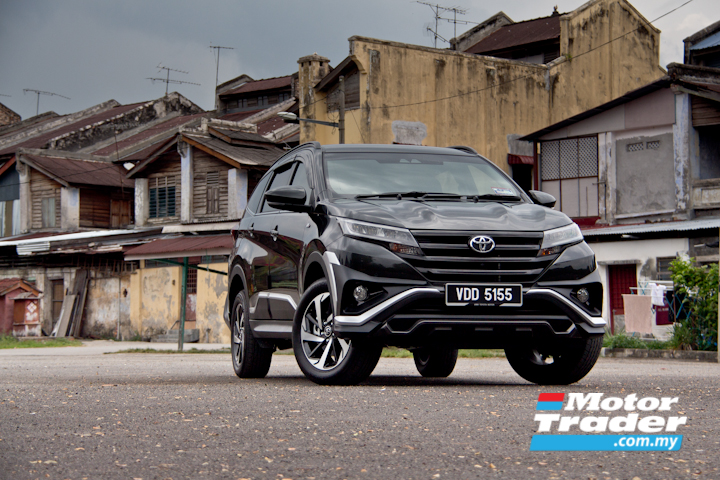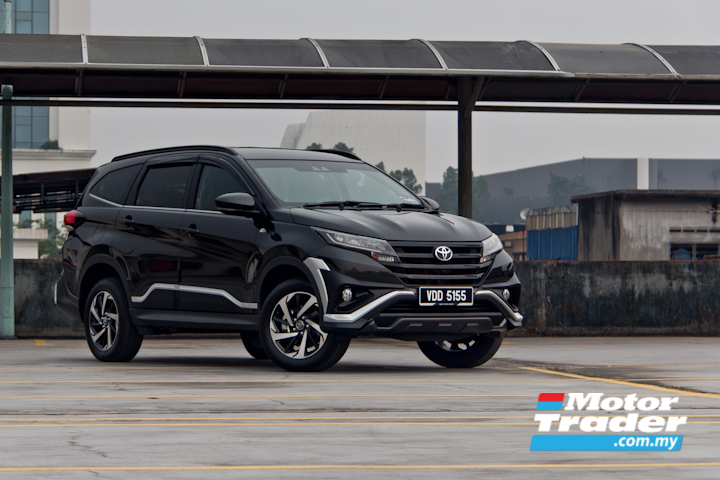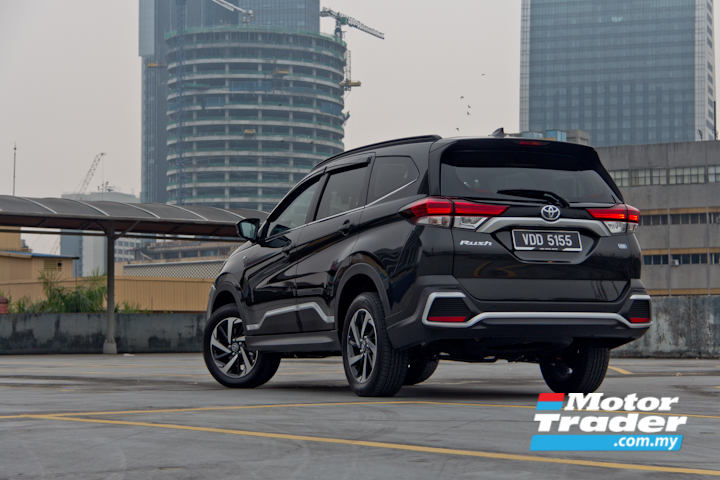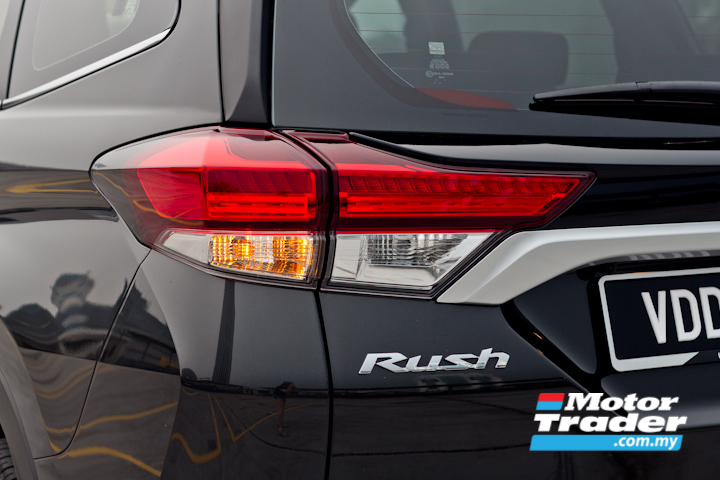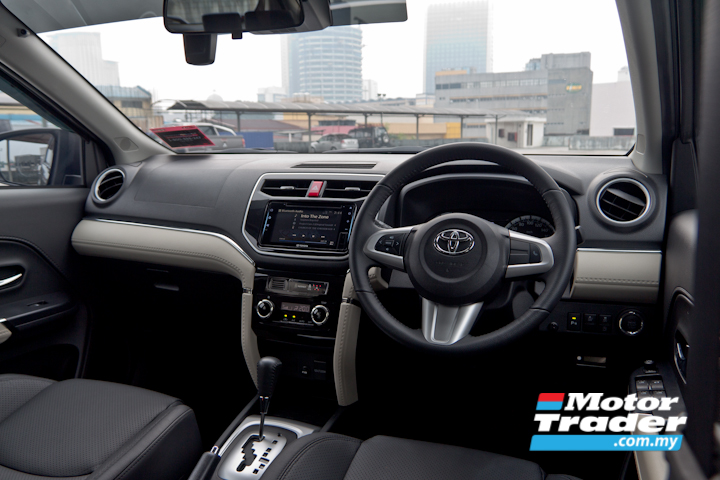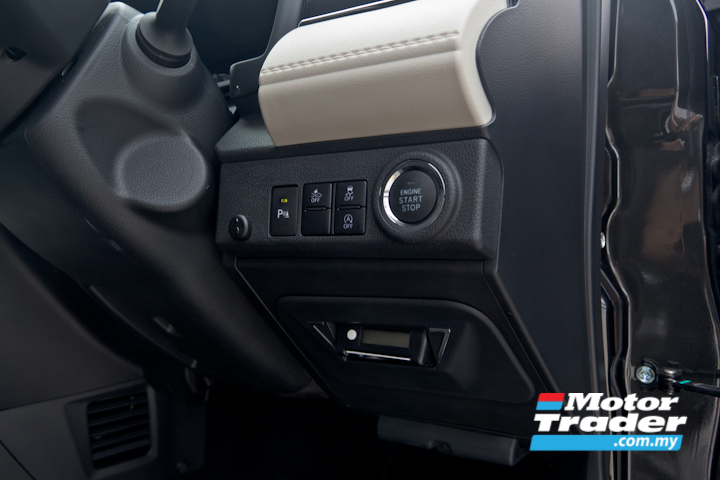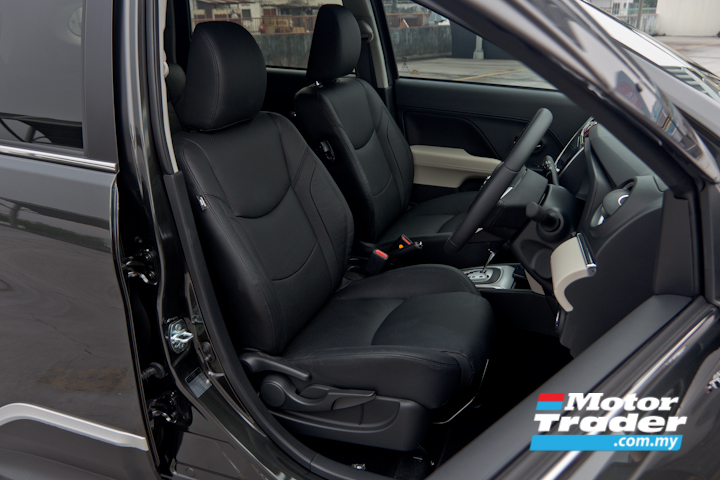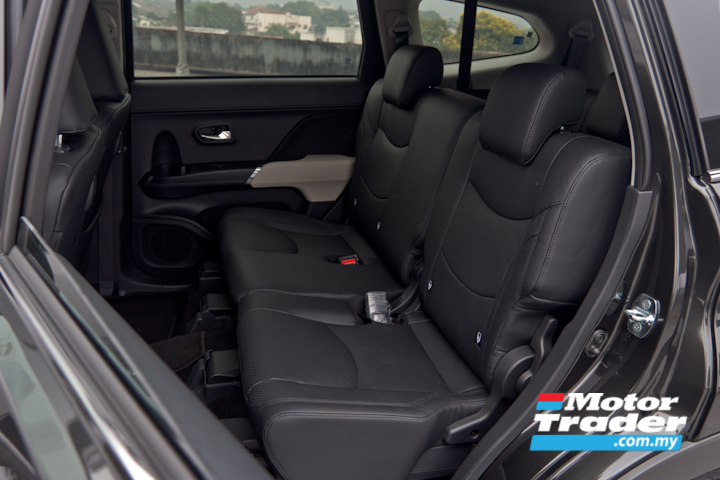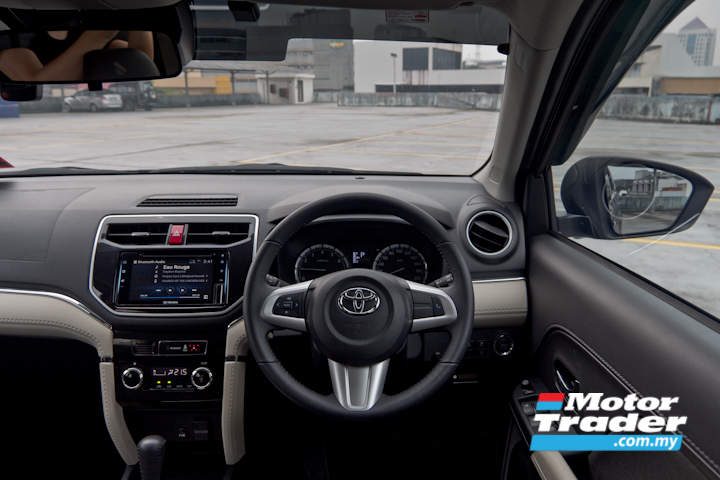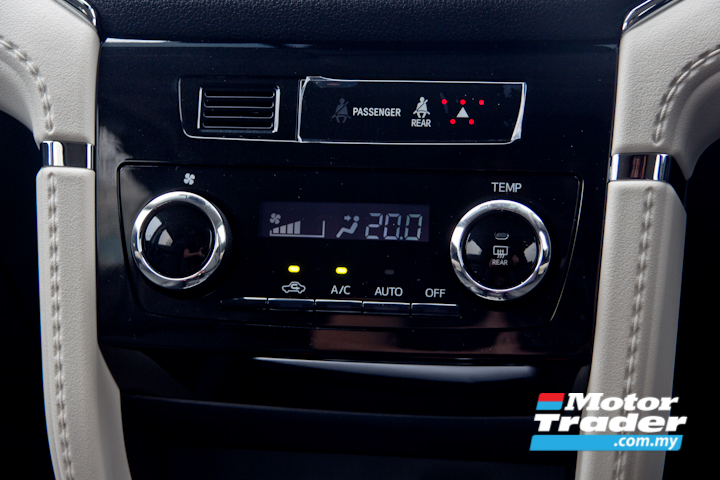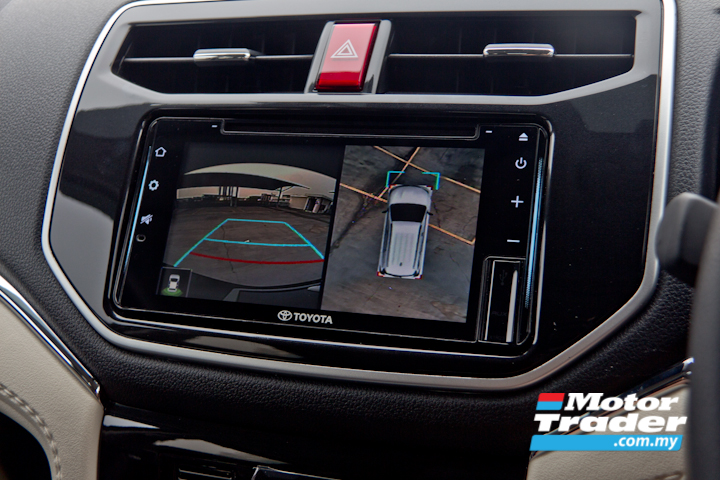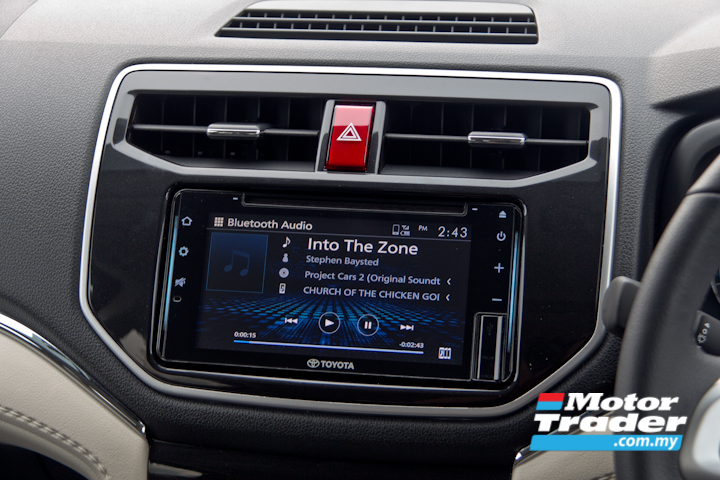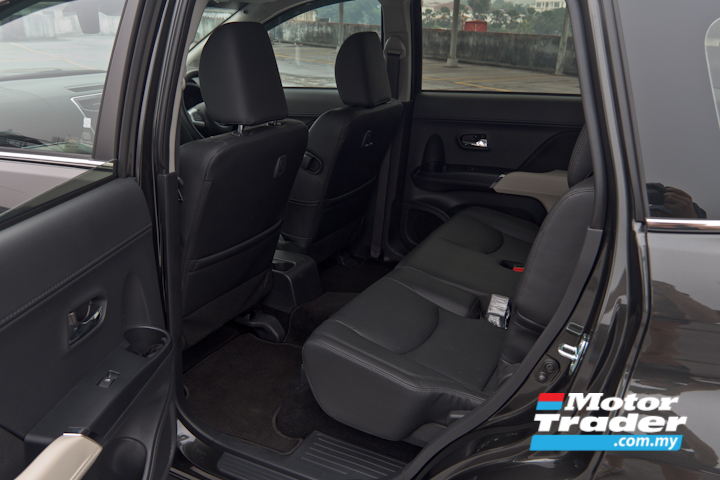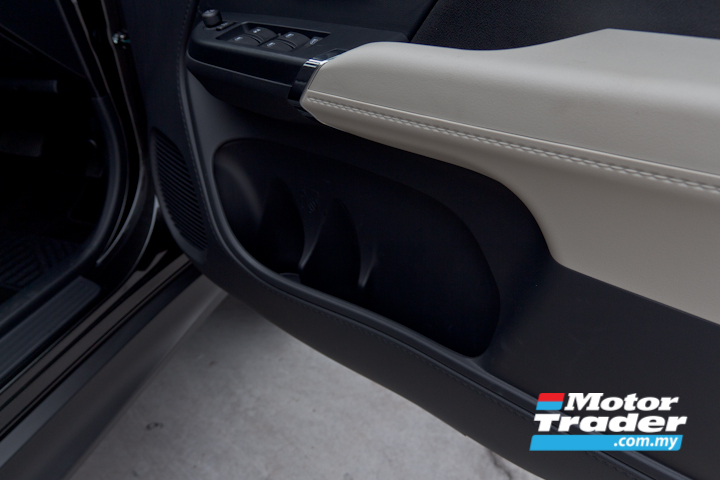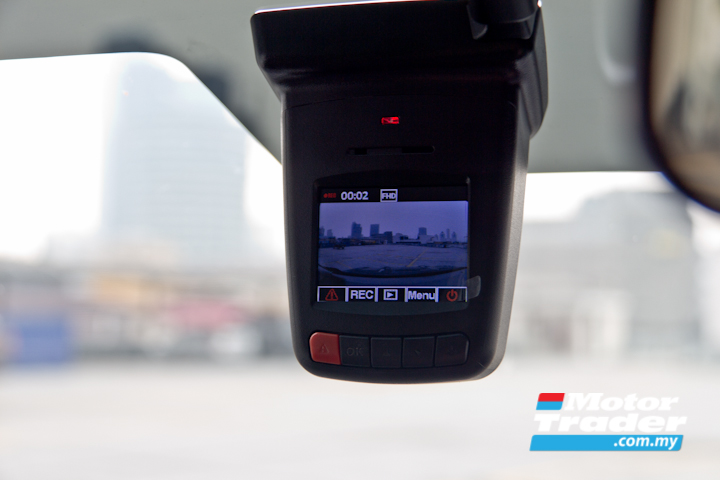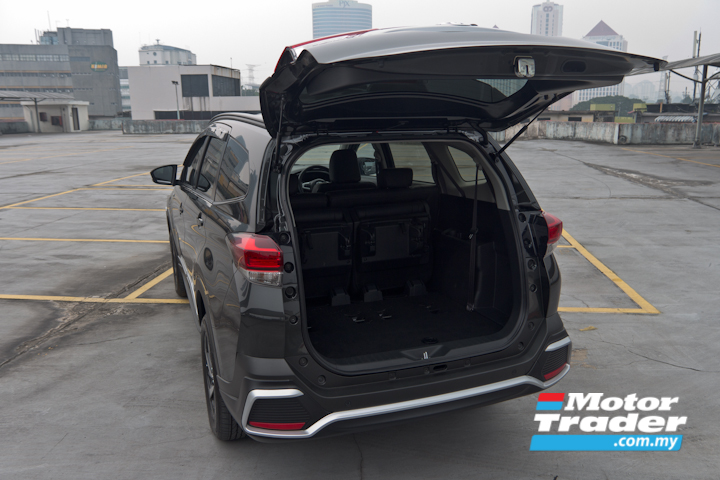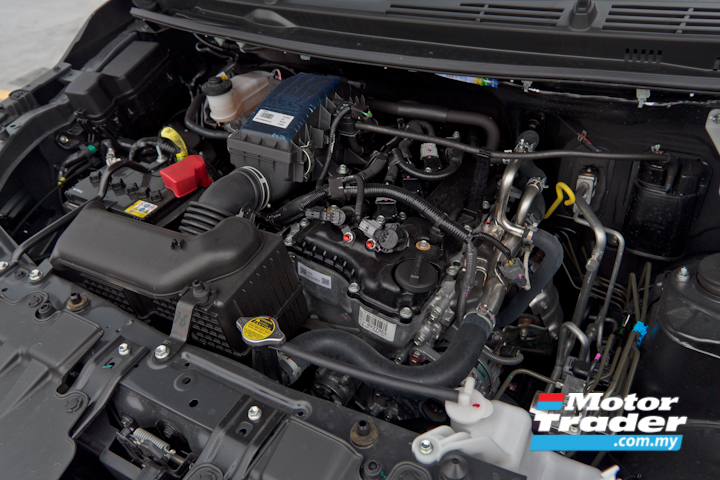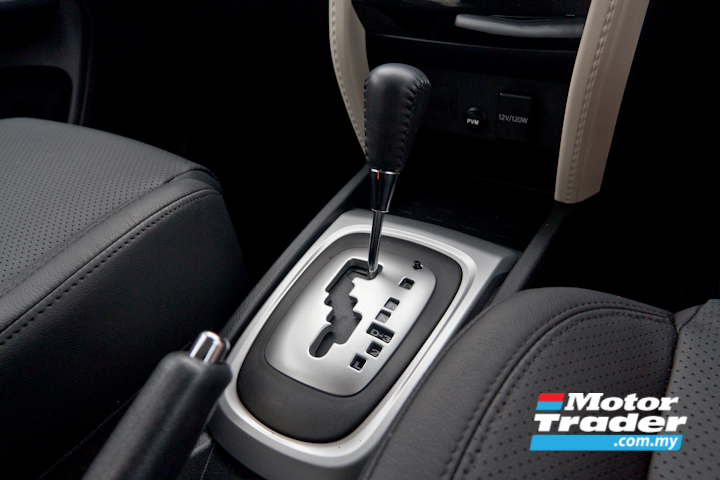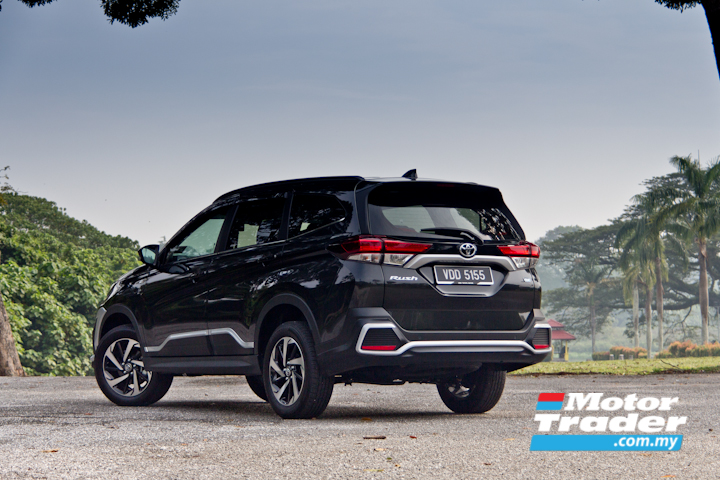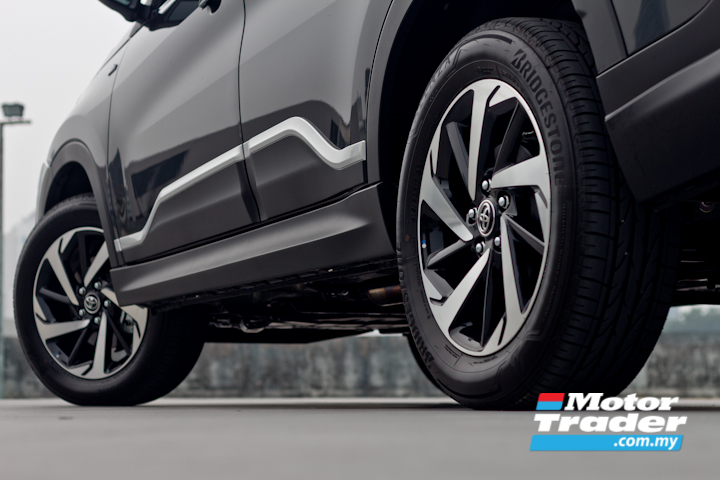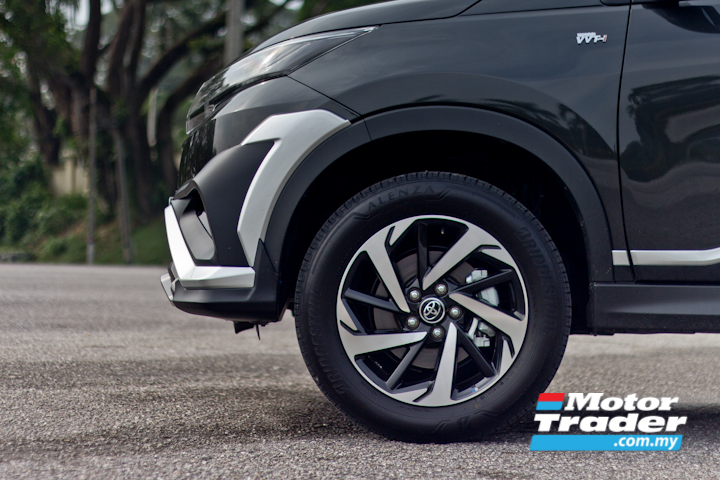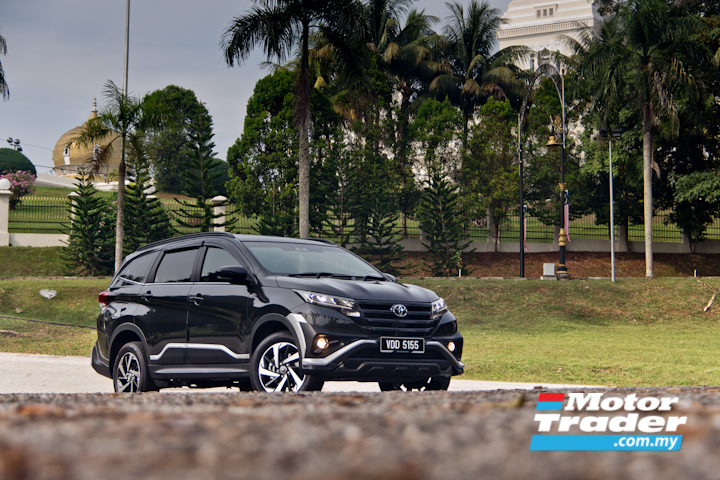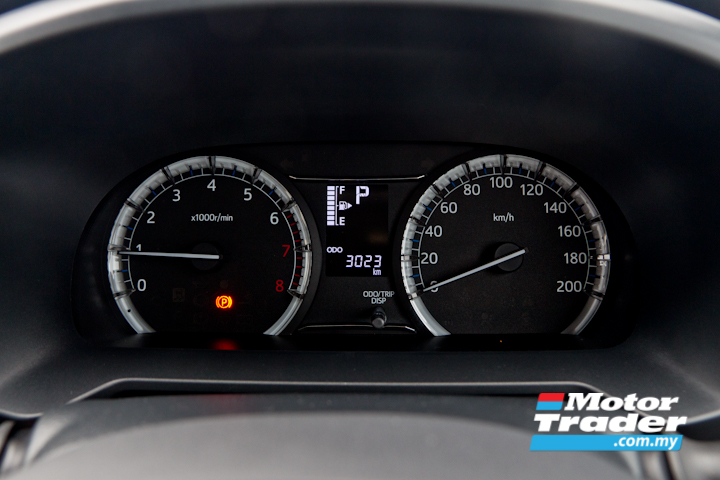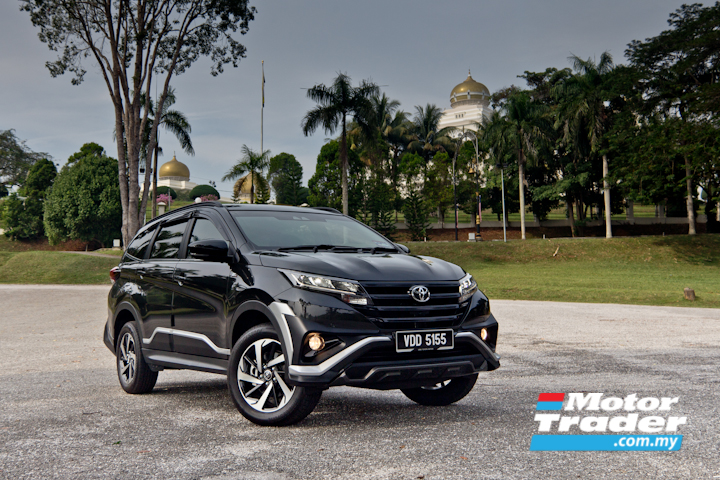Although it is based on the Perodua Aruz, the 2019 Toyota Rush is an MPV of its own
They may look the same, sound the same, but not the same car with closer scrutiny. Yes, the styling is the same, have the same amount of seats, share the same drivetrain and even the LED headlamps. But, it is when you sit in it and drive it is when the difference is quite stark when you drive both cars back to back.
Then comes the question of, is it worth the extra money? Sure the Perodua badged version is much more appealing but does the additional asking price would reflect in the car itself?
Before assuming the “Can I Copy Your Homework?” meme is relevant to the Toyota Rush, do know that platform sharing is a thing in the automotive industry. In fact, it’s done among premium brands to save development time and costs.
The prime example of this is the collaboration between BMW and Toyota in developing the Z4 and the fifth-generation Supra. Moreover, this wasn’t the first time Toyota and Perodua shared platforms.
The looks of the Toyota Rush
This is what loosening up the budget constraint looks like. The 2019 Toyota Rush 1.5S has a dynamic look to it, ready to go around the city (or town) while Queen’s Don’t Stop Me Now is blaring in the background and would appeal to the outdoorsy folk.
It certainly looks aggressive with the frowning get-out-of-my-way full-LED headlamps in addition to the body kit. The Rush’s look is topped off with 17-inch alloy wheels which is different than the Aruz. At the rear, it comes with LED tail and brake lamps at the rear. The reverse and signal indicators are the conventional bulb types.
When driving in the dark or in bad weather or both, the LED headlamps are bright enough to light the way ahead, while activating the high-beam (which is a dedicated LED lamp) provides additional reach. The halogen fog lamps to fill in the darker areas unlit by the LEDs.
The Interior of the Toyota Rush
Here is where you’ll see and feel where the extra money had gone into. The interior feels much more upmarket with a higher perception of quality. The contrast between the cream and black plastics does hide the fact they are hard to the touch. Moreover, the gaps in between the trims have smartphone-like tolerances.
But, it’s one that is livable with on an extended period of time. And knowing that fact that in many Toyota cars which came before, the plastics are very likely to last for a very long time. This is same for the door cards which also feature soft-touch surfaces.
As a person who stands at an average height, the front seats are accommodating. The seats have lumbar support which makes long road trips bearable. Both front occupants are able to adjust the seats manually, while the driver is able to adjust their height.
The second-row seats can sit three abreast and fold 60:40 which passengers can recline and slide aft and fore to give more room for the two sitting on the third-row seats. The second-row seats can tumble and fold forward by pulling the seat lever forwards to allow access to rearmost seats.
When it comes to driver comfort and ergonomics, the Toyota Rush sits the driver upright for a commanding view ahead. The steering column is only tilt adjustable. And likewise in the other SUV, I was able to find my comfy spot without any issues. Blind spots aren’t an issue as the driver is able to peek at the rear quarter windows in the rearview mirror and the wing mirrors are big enough.
The centre stack is easy to reach within arms reach of the 6.8-inch touchscreen and the automatic air conditioning interface. There are two rotary dials which feel good to the touch and provides good feedback. However, there’s no way in switching the airflow direction.
The Toyota Rush’s Multimedia System
For added convenience, the Rush’s 360-degree cameras are able to relay images around the car, making it much easier to navigate into and out of parking spaces. This is thanks to the 6.8-inch touchscreen with DVD-AVX with USB mirroring, which stitches together the camera inputs around the vehicle to create a pseudo-birds-eye-view above the Rush. It’s surreal, but it does definitely help a lot!
Sound reproduction comes from six speakers – two twitters on the A-pillars and four at the doors – which offers pretty decent sound quality to suit many genres. These include Jazz, Acoustic Indie and even Ah Beng Handphone Shop Techno on Spotify.
That said, the infotainment system is not very difficult to use as the interface provides clear graphics and simple menu designs.
The Toyota Rush’s Practical features
The Toyota Rush is a practical beast, featuring many helpful features like the 3Kg shopping hooks at the front seatbacks of the two front seats, the 3Kg Anti-snatch Hook the right flank of the passenger seat, and a USB port at the left flank of the driver’s seat. There are also 12V sockets available at the second and third-row seats.
The road-trip ability is further strengthened with deep cubbies on all four door cards, which the front occupants two drinks bottle on each side, two at the rear, and two more at the third row. This totals to 13 cup holders. In addition, the centre floor console can fit three drinks bottle when needed as well.
Standard is the built-in Auto Tag Smart Tag reader. Super handy when driving through Smart Tag lanes saving you much from buying 9V batteries as it runs from the Rush’s own power. Better yet, it’s illuminated when the headlights are switched on, so no more struggling to find out how much is left in the card when driving in the dark. The Rush also comes with a Digital Video Recorder (DVR) that only takes onboard footages ahead.
With the third-row seats up, the Toyota Rush’s luggage capacity stands at 213-litres, while after tucking them up frees up an additional 301-litres, up to 514-litres. The Rush also allows flexible seating configurations depending on the activity and needs of the day.
Powerplant
The Rush is powered by Toyota’s 2NR-VE naturally-aspirated 1,496 cc four-cylinder engine with EFI and Dual VVT-I, which makes 103 bhp at 6,000 rpm and 136 Nm of torque at 4,200 rpm.
Mated to it is a four-speed conventional automatic gearbox which sends power to the rear wheels. The Auto Stop-Start system keeps auxiliary items such as the air conditioning and infotainment system switched on while the engine is switched off while the brake pedal is depressed.
UMW Toyota did not release any fuel economy figures in its brochures. As tested in real-world situations the Rush is able to do*:
- 12.0 Km/L (8.3 L/100Km) Urban [moderate traffic],
- 17.2 Km/L (5.8 L/100Km) Highway [including hard acceleration],
- 15.2 Km/L (6.6 L/100Km) Combined [light to moderate traffic].
*As tested. Fuel consumption can vary from person to person and depending on the type of journey and traffic conditions.
How does the Toyota Rush drive?
Driving wise, the Rush is quite an all-rounder; the 1.5-litre engine is able to drive the 1.3-tonne kerb weight around city streets and on highways without much effort.
However, when it comes to driving up hills, the engine does require some persuasion to give it all. Moreover, engine noise isn’t as intrusive as the other one, which adds a pinch of refinement while cruising on the highway.
And being rear-wheel drive only, the Rush can go around tight with its 5.2-metre radius, which is again pretty impressive for a vehicle of this size. This is also thanks to the electrical power-assisted steering rack does make things light and easy when driving in tight parking spaces.
The one thing that the Rush can’t run away from is its chassis; the body-on-frame chassis is susceptible to torsional flex and is less rigid than a pure monocoque design. And with the tall tyre sidewalls, handling response and feedback isn’t the Rush’s strongest asset.
The positive effect is that the flex does take many of the vibrations away from the contents in the interior. In addition, the beefy 215/60 R17 Bridgestone Alenza road tyres all-round is a contributor to its plush ride.
Suspending the Toyota Rush are MacPherson struts with coil-spring and stabiliser bar at the front and a five-link coil-spring live axle suspension at the rear. These have pick-up-truck-like articulation over uneven surfaces while providing comfort and compliance with more people or weight on board.
That said, it’ll won’t fall over and roll, no. The Rush has good body control without feeling overly precarious when turning into the apex for a vehicle with a high centre of gravity. It’s not made for carving corners, but when in times of need, the Toyota Rush is able to go around safely.
Although it has a tendency to understeer, the Toyota Rush 1.5S’ Vehicle Stability Control (VSC) & Traction Control (TRC) systems work in the background in real-time to keep it in line and making driving on the limit forgivable for the driver.
ABS and EBD keep the wheels from locking in emergency braking, while the latter keeps the car from diving too much and upsetting its balance, especially when swerving in emergency situations.
The Rush is well equipped in this department; it comes with Pre-Collision Warning, Pre-Collision Braking, Front Departure Alert and Pedal Misoperation Control. These systems do help the driver to mitigate impending frontal collisions.
The Front Departure Alert brings you back from distractions while waiting in the queue. Also, Hill-start Assist Control (HAC), Blind Spot Monitor (BSM) and Rear Cross-Traffic Alert (RCTA) are fitted as standard.
Is the Toyota Rush worth looking into?
Although the Perodua Aruz is RM19,100 cheaper than the Toyota Rush 1.5S’ RM97,000, the difference can be felt when sitting inside both SUVs back to back. You will notice that the latter is more refined and has more standard features. The audio system sounds much better, while the ride is plusher and more isolated as well.
It’s quite a tough choice to make if you were to ask me. But after ruminating over it for a while, think of it as either paying less on monthly instalments or have the higher resale/trade-in value. Whichever SUV you end up with, you’ll won’t go wrong as both SUVs offer great value in the long run.
Breena Au
Toyota Rush 1.5S Specification
Price RM97,000 (RM99,750 East Malaysia)
On sale Now
Engine 4-cyl, 1496cc, naturally aspirated, petrol
Power 103 bhp at 6,000rpm
Torque 136Nm at 4,200rpm
Gearbox 4-spd automatic
Kerb weight 1,305kg
Top speed 170km/h
0-100km/h 11.0sec
Looking for a Toyota? Check out listings for Toyota cars here. List your car or bike to sell here.
